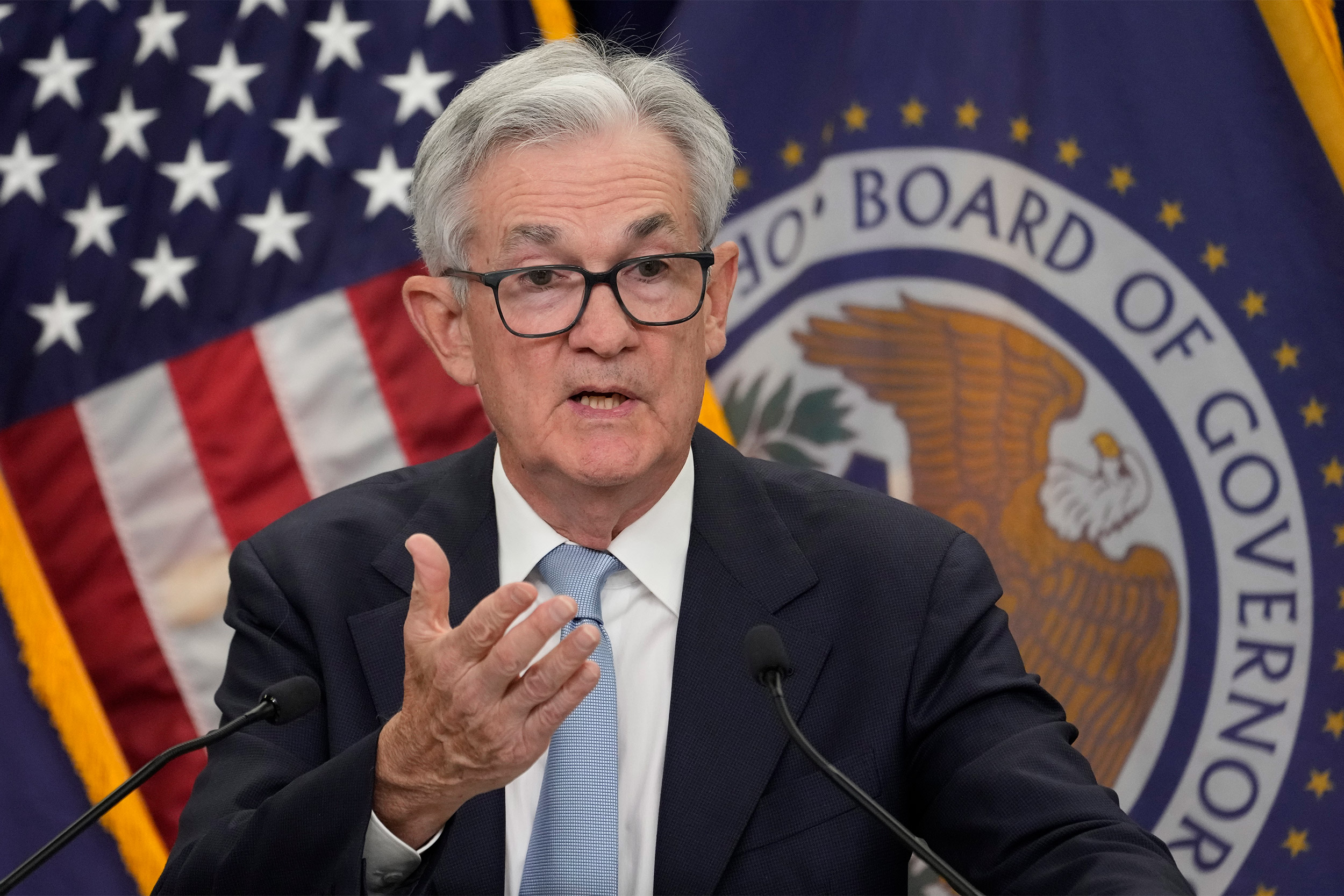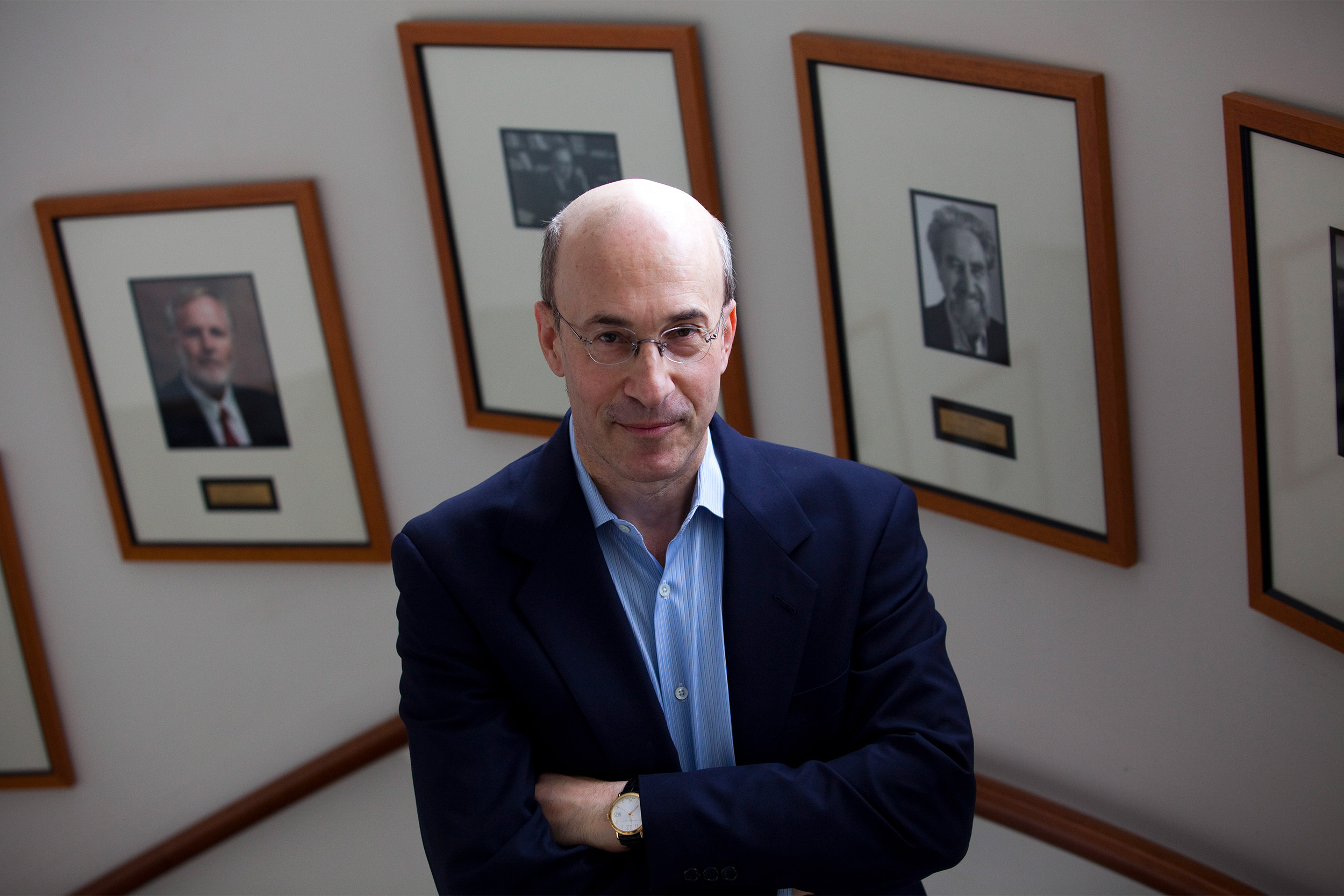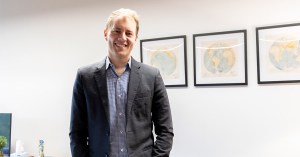
Federal Reserve Board Chair Jerome Powell addressed recent developments in the banking sector and the .25 percentage point increase in interest rates at a press conference on Wednesday.
AP Photo/Alex Brandon
Prospects of avoiding recession fading
Ken Rogoff says Fed is caught between rock, hard place: To lower inflation it must raise rates but that may trigger banking crisis. No easy answers.
The Federal Reserve Board is walking a tightrope. The central bank has been on a campaign to raise interest rates in an effort to lower surging inflation. But the higher rates also contributed to the recent collapses of Silicon Valley Bank, and several other financial institutions.
The Fed opted to keep raising rates Wednesday, but by only a modest 0.25 percentage point, as expected. In a statement, the Federal Open Market Committee (FOMC), which sets the rates, said the U.S. banking system is sound and resilient but the recent failures will likely make borrowing harder and more expensive for businesses and consumers, and impact economic activity, hiring, and inflation.
How far reaching the effects of all of this will be remains uncertain, Fed chair Jerome Powell said. He also said that there might still be a path that will allow the nation to rein in inflation without falling into a recession, a so-called soft landing, but the central bank is still searching for it.
Kenneth Rogoff is the Maurits C. Boas Chair of International Economics and a professor of economics at Harvard. An expert on global financial crises, Rogoff spoke with the Gazette about his views on how the Fed is doing and what it might do next.
Q&A
Kenneth Rogoff
GAZETTE: Interest rates went up by just a quarter of a percentage point. However, the FOMC did consider a rate pause, and there was a strong consensus to do so, according to Powell. Was this the right move or did last week’s bank failures force the committee’s hand?
ROGOFF: They’re sort of caught between a rock and a hard place. It could look in six months like they made a horrible mistake, either because we have a banking crisis and they wished they hadn’t raised rates, or because inflation is still out of control and they wished they’d raised rates more. Core inflation, which is perhaps the most meaningful number for looking at where things stand, is still very high. Wage growth is still very high as well. At the same time, we’re in a banking crisis, albeit not yet a systemic crisis. Still, even if no more banks fail near-term, lending conditions are surely going to tighten, partly because money is moving out of small banks and into larger ones, partly because banks are needing to pay higher deposit rates, partly because banks realize that tighter regulation is inevitable, even for smaller and mid-size banks. Tighter credit conditions mean that banks are going to pull back on lending, on mortgage lending, auto lending, and business lending. The Fed and the Treasury stemmed the panic, but only by issuing such a broad, sweeping guarantee that they’ve de facto guaranteed every deposit in America regardless of its size — completely the opposite of what they said they were going to do next time in the aftermath of the 2008 financial crisis. But if the taxpayer is going to be asked to take on so much bank risk, the Fed and the Treasury are going to have regulate more intensely, and that’s going to tighten lending conditions.
“I think Powell got it just right saying ‘we raised by a quarter, but we actually thought about pausing’ because it signals that next time, if the banking sector is still experiencing volatility, they’ll pause,” said Kenneth Rogoff.
File photo by Stephanie Mitchell/Harvard Staff Photographer

GAZETTE: While pronouncing the U.S. banking system sound and resilient, Powell said it was too soon to say how rates should respond to the bank crisis.
ROGOFF: Well, it’s sound and resilient in the sense they’ve guaranteed every deposit in America (even if Treasury Secretary Janet Yellen has subsequently tried to walk that back a little). Probably they’ll even guarantee the money market funds if it comes to that, which they did in 2008. As noted, they’ve made such sweeping guarantees that they are virtually forced to follow up with a lot more regulation, otherwise bankers are going to do very risky things knowing that the Fed’s going to bail them out. There may be further mini deposit panics, but it’s pretty clear that the Treasury and the Fed have decided not to allow a banking panic to take root.
GAZETTE: The Fed announced that it was prepared to adjust its stance as risks emerge. What will they be looking for?
ROGOFF: They’re almost certainly looking in the books of the banking sector, mainly due to the hit they have taken on longer-term loans with interest rates rising so sharply. The value of long-term bonds, even U.S. Treasury bonds, can fall sharply when interest rates rise this much. Estimates range from $600 billion to $2 trillion of losses sitting in the banking sector.
A central driver of the recent problems is the growing realization that we’re probably entering a decade with higher inflation-adjusted, long-term interest rates (that is, real interest rates) than we had in the decade before 2022. And that will be a more difficult world to live in, especially for governments and companies that were relying on when the inflation rate and the interest rate being about the same, almost making borrowing free. This led to the wacko ideas like modern monetary theory, which argued there was little risk or cost to using debt finance (as opposed to higher taxes) to pay for expanding social programs and the greening of the economy.
We are probably not living in the ultra-low interest rate world anymore. If so, that is going to housing prices, stock prices, art prices, etc.
I think Powell got it just right saying, “We raised by a quarter, but we actually thought about pausing,” because it signals that next time, if the banking sector is still experiencing volatility, they’ll pause. Maybe not indefinitely, though: The difference between this time and 2008 is that now we have inflation. In 2008, interest rates just collapsed to zero, and their job was pretty easy from that perspective. This time it’s not.
“A central driver of the recent problems is the growing realization that we’re probably entering a decade with higher inflation-adjusted, long-term interest rates (that is, real interest rates) than we had in the decade before 2022. And that will be a more difficult world to live in …”
GAZETTE: Powell said he welcomed and expected outside investigations, and that it was “clear we need to strengthen supervision and regulation” of banks. What more can and should the Fed be doing?
ROGOFF: The Federal Reserve has a more complicated governance structure than most people realize. There’s the board itself that sits in Washington, D.C. It has seven people, with Powell as one of them. There are also 12 regional Feds. They alternate in their votes, a few of them at a time get to sit on the Federal Open Market Committee. The regional Feds have their own governance and make their own decisions, and their governance structure is still antiquated. The San Francisco Fed, which is quite typical, had local banking presidents sitting on its board of directors, including the head of the Silicon Valley Bank. That is, he was sitting on the board of the body that was supposed to be regulating him.
GAZETTE: Powell said it’s too early to say whether these recent bank failures will have a major effect on the chances for a soft landing, but that the Fed believes there’s a pathway and that they’re still trying to find it. What do you make of that?
ROGOFF: Never say never, but it seems that the chances of a soft landing are getting smaller and smaller. Faced with the choice between having a deep recession and allowing inflation to persist, I’d say it’s more likely they’re going to just leave inflation hanging for longer than they would like, probably past the end of 2024.
But, of course, they are worried that bond holders will start demanding a bigger inflation premium, and that they may. Over the past two years, we have been going through an episode where inflation to date already has been the equivalent of a partial default on government debt in real terms, at least in real (inflation-adjusted) terms. If you were a bond holder, your bond is worth a lot less than you thought it would be a year and a half ago. And it’s been a huge bonanza for the government. That’s saved them from raising taxes.
But the bondholders, if they don’t believe the Fed, that this was just an honest mistake and the Fed’s never going to do it again, they’re going to start demanding to be compensated. It’s going to raise interest rates across the board, and that’s going to be expensive for everybody. And so, they’re trying to avoid that. But it’s not easy at this point.
GAZETTE: Is something that vague going to reassure the markets and the public?
ROGOFF: It’s a very difficult situation. If he raises rates, it’ll fight inflation, but it’ll raise the odds of a banking crisis. If we didn’t have high inflation, they’d be cutting rates. The situation is a legacy, to some extent, of the pandemic, but to some significant extent of the Trump and then Biden stimulus going on for too long, and the Fed waiting too long to raise interest rates. There was just this massive experiment in macroeconomics, and they overdid it.
After the 2008 financial crisis, everybody said, “They should have stimulated more.” After this one, they’re all going to say, “They should have stimulated less.” And the honest truth is, it’s very hard to know in real time making forecasts. After 2008, all the forecasts, not mine and Harvard economist Carmen Reinhart’s but most of the forecasts were that it was going to get better quickly. This time, all the forecasts were that it was going to be really horrible — and they were wrong.




